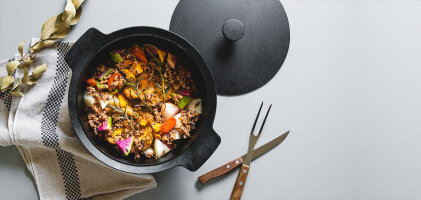Eating with Chopsticks Properly and the Absolute Taboos

Eating with chopsticks - tradition and history
For more than 3000 years, people in China have been eating with chopsticks. In the 7th century, chopsticks reached Korea, Japan, and Vietnam through priests and missionaries. At that time, knives were perceived as a threat at the table, so it was customary to chop food before cooking. Around 400 BC, there was a shortage of fuel, and it was around this time that chopsticks became an everyday item. The food to be prepared was chopped into small pieces beforehand, allowing it to be heated and cooked more quickly. Currently, 1.2 billion people worldwide use chopsticks, while 900 million use knife and fork combined. A significant historical difference between Japanese and Chinese chopsticks was primarily their length, with Japanese ones being noticeably shorter. In the past, chopsticks were made of bamboo, but today, most are made of wood or metal. Only the nobility and wealthy merchants were allowed to use magnificent hand-carved chopsticks made of jade or ivory.
Determining the optimum rod length
The prerequisite for learning to eat with chopsticks is the correct length of the chopsticks. Women's chopsticks are often slightly shorter than men's, as men generally have larger hands. The Japanese have established a simple rule for determining the appropriate length. The length of the span between the user's thumb and index finger is measured, and this represents 2/3 of the optimal length (span length + half span length = chopstick length).
The correct handling for eating with chopsticks
One of the chopsticks is placed between the index finger and the base of the thumb; this chopstick serves as the fixed point and should not be moved. Right-handed individuals naturally use the fingers of their right hand for this purpose. The left hand can be used to fine-tune the positioning of the chopsticks initially.
The second chopstick is held with the tips of the thumb and index finger (and possibly the middle finger). It is essential to ensure that the two thin ends are at the same height, or else gripping becomes very difficult.
Now, move the index and middle fingers back and forth to control the chopsticks. This allows you to grasp the rice or meal. The first chopstick remains stationary throughout. The chopsticks should always fit well in the hand, enabling a secure grip on the rice, for example. If anything shifts, simply adjust the position of the chopsticks with the other hand.


Every beginning is difficult, so don't be discouraged and resist the urge to reach for the spoon right away if things don't go perfectly at first. Eating with chopsticks significantly enhances the dining experience of sushi and other Japanese recipes. Nowadays, there are many learning videos on YouTube that you can watch for practice. Once you master it, eating with chopsticks becomes much more enjoyable than using a knife and fork, especially with typical Japanese dishes like rice, sushi, or ramen (Japanese noodles).

Table manners and taboos
Customs and manners hold a high tradition in Japan, with great emphasis on etiquette and behavior. Many are internationally comparable, yet there are some rules to be observed to avoid being perceived as "uncultured."
Here, we have summarized the most important taboos for you.
- Never insert chopsticks vertically into food, such as sticking them in rice - this is reserved for offerings to the deceased. It is considered a bad omen and reminiscent of incense sticks at funerals. Sashi-Hashi
- Do not pass food with chopsticks - following a Buddhist ritual, bones from the ashes of the deceased are presented to relatives. This is also a rule of conduct at funerals and is considered bad (or even ominous) table behavior. Hiroibashi
- Do not lick the tips of the chopsticks with pleasure. Neburibashi
- Never point with chopsticks at something or someone. Pointing fingers are generally taboo in Asian cultures, and the same goes for pointing at someone with chopsticks. Sashibashi
- Do not bring the bowl to your mouth and shovel the contents into your mouth with chopsticks. Kakibashi
- Do not place the chopsticks on the plate or bowl. They should always be placed on the hashioki (chopstick rest). Watashibashi
- If communal dishes are served without serving utensils, use the end, not the tip, of the chopsticks to fill your own plate.
- Do not cross the chopsticks. When you finish eating, place the chopsticks to the left of your plate.
- Do not tap the bowl or plate with the chopsticks. Beggars used to do this in ancient China.
- Do not use the chopsticks as toothpicks, even if no other toothpicks are available.
- It is also not acceptable if you grab something with chopsticks and the sauce falls onto another dish or the table. Namidabashi
- It is considered uncouth to poke around in the food to reach a specific component. Saguribashi
- Food holds high cultural significance in Japan. Therefore, make sure to eat slowly and only swallow when picking up the next bite with the chopsticks. Kombibashi


Newsletter subscribe now
Our newsletter subscribers are the first to be informed!!
News about products, manufacturers & designers
and cultural topics relating Japan



Newsletter
Our newsletter will inform you about
exciting new posts about the
Japanese culture!
Sign up now!





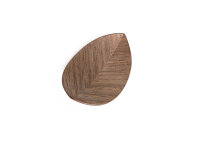










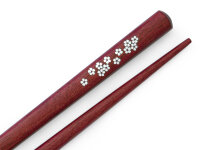


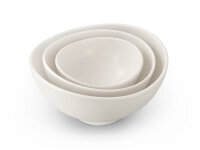




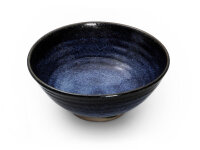













-from-the-yakiyaki-grill-pan.jpg)



